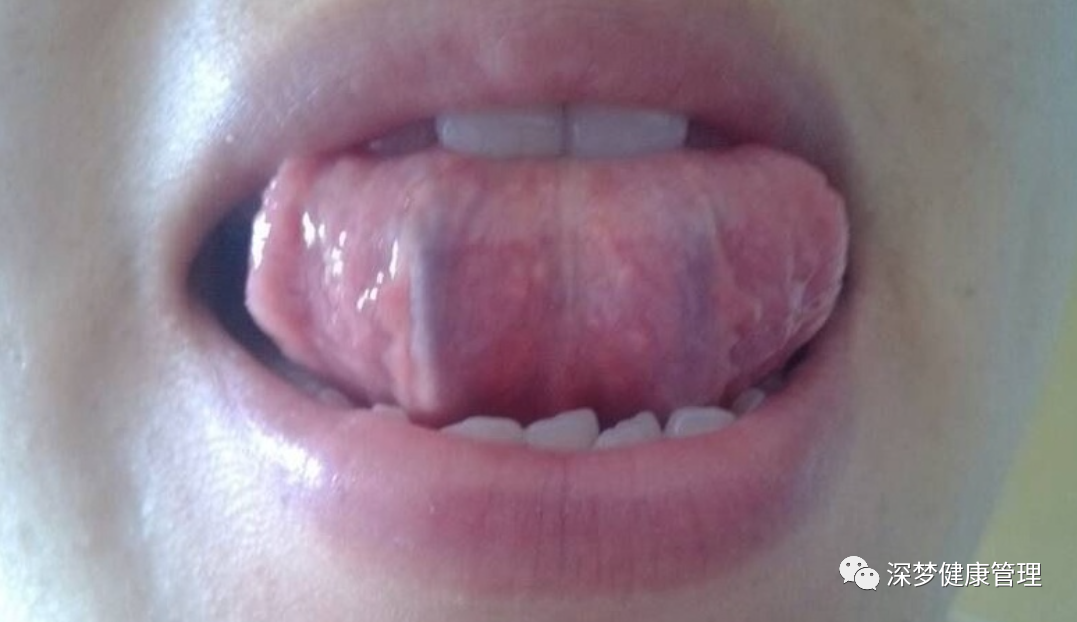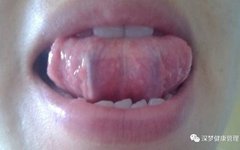Blood circulates throughout the body, and when blood flow is obstructed or there is local stagnation, it results in blood stasis (xue yu).Blood is different from Qi; Qi is abstract and intangible, while blood is a tangible substance, namely, the blood itself.What is stasis? It refers to blockage in a certain area, which, if not resolved over time, can evolve into various lumps, nodules, hyperplasia, fibroids, etc.It can be said that blood stasis is one of the common causes of major diseases such as various tumors. Therefore, if there is a tendency towards blood stasis, it is advisable to take measures to regulate it and prevent the progression towards disease.Blood stasis is both a pathological product and a pathogenic factor, and it can vary in degree. Many indicators can reflect the degree of blood stasis, and for the average person, the most intuitive method is to observe the tongue.

Observe the color of the tongueThe healthy tongue color should be light red. A slight blood stasis manifests as a slightly dark red tongue, moderate blood stasis appears darker, while severe blood stasis turns a purplish color.Look for stasis points or stasis spots on the tongueLight blood stasis can be seen as stasis points on the tongue, moderate blood stasis shows stasis spots on the edges, while severe blood stasis has stasis spots of varying sizes all over the tongue.Examine the sublingual veinsA healthy sublingual vein is light blue, not exceeding three-fifths of the tongue’s length, and less than 2.7 mm in diameter. Light blood stasis shows a sublingual vein exceeding three-fifths and slightly thickened; moderate blood stasis shows a noticeably thickened sublingual vein; while severe blood stasis shows significant thickening, even bifurcation of the sublingual vein.The “Medical Guidelines” states: “If a person’s diet and daily activities are inappropriate, it can cause blood stasis, hence many diseases arise from stagnant blood.” This highlights the interrelation between blood stasis and disease.When blood flows smoothly, the body remains healthy, just like a river clogged with silt or litter, which prevents normal flow; blood behaves similarly.If blood is in a hypercoagulated state or flows slowly, and the vessel walls are not smooth, it can lead to blood stasis, obstructing blood flow, which can become a hidden killer of health. Hazards of Blood Stasis:1. Obesity; individuals with this constitution may experience complications of obesity early, such as hypertension, diabetes, hyperuricemia, and stroke.2. Weight loss occurs without any identifiable disease, and women may have menstrual issues.3. Individuals with blood stasis may have mild acne, but the marks do not fade easily, making them prone to pigmentation.4. Dysmenorrhea, breast hyperplasia, and susceptibility to uterine fibroids and ovarian cysts.5. Irregular menstruation is common.6. Depression, migraines, and intercostal neuralgia. Sharp pain in the hypochondrium indicates blood stasis, while distending pain is primarily due to Qi stagnation.
Hazards of Blood Stasis:1. Obesity; individuals with this constitution may experience complications of obesity early, such as hypertension, diabetes, hyperuricemia, and stroke.2. Weight loss occurs without any identifiable disease, and women may have menstrual issues.3. Individuals with blood stasis may have mild acne, but the marks do not fade easily, making them prone to pigmentation.4. Dysmenorrhea, breast hyperplasia, and susceptibility to uterine fibroids and ovarian cysts.5. Irregular menstruation is common.6. Depression, migraines, and intercostal neuralgia. Sharp pain in the hypochondrium indicates blood stasis, while distending pain is primarily due to Qi stagnation.
Phospholipid Linoleic Acid as a Blood Circulation Promoter
Phospholipid linoleic acid can promote blood circulation, soften blood vessels, reduce blood viscosity, lower cholesterol, and enhance vascular resilience. It can clear blood waste, prevent cerebral thrombosis and stroke, improve cerebral blood supply, combat myocardial ischemia, and restore vascular elasticity. Additionally, it can be used for liver protection, prevent senile dementia, and improve urinary frequency.

What are phospholipids? The outer layer of cells is called the cell membrane, and many organelles within cells also have membrane structures, primarily composed of phospholipids. Phospholipids were first discovered in eggs, hence the name “lecithin”; the main component of phospholipids is phosphatidylcholine (PC).
Main Functions of Phospholipid (PC)
Vascular Scavenger
Good emulsifying properties can dissolve triglycerides and cholesterol plaques on blood vessel walls into small particles, reducing fat retention on the vessel walls, preventing damage to the vascular endothelium caused by cholesterol, and increasing blood fluidity. Taking phospholipids has significant effects on hyperlipidemia and high cholesterol, thus preventing and treating atherosclerosis, such as hypertension, myocardial infarction, and cerebral hemorrhage.
Natural Beautician
Phospholipid deficiency can reduce the regenerative capacity of skin cells, leading to rough skin and wrinkles. Supplementing phospholipids can enhance hemoglobin function, making the skin smooth and supple. Phospholipids are also a natural detoxifier, capable of breaking down excess toxins in the body, reducing spots and acne on the face. The inositol contained in phospholipids is a major nutrient for hair, inhibiting hair loss and gradually restoring black hair.




For those who want to learn more information, please click to read the original text

⊙Note:The content of this article is for general knowledge and should not be used as a prescription.
If you want more knowledge about health, nutrition, and career, please click to read the original text and enter the “Health Think Tank”!

